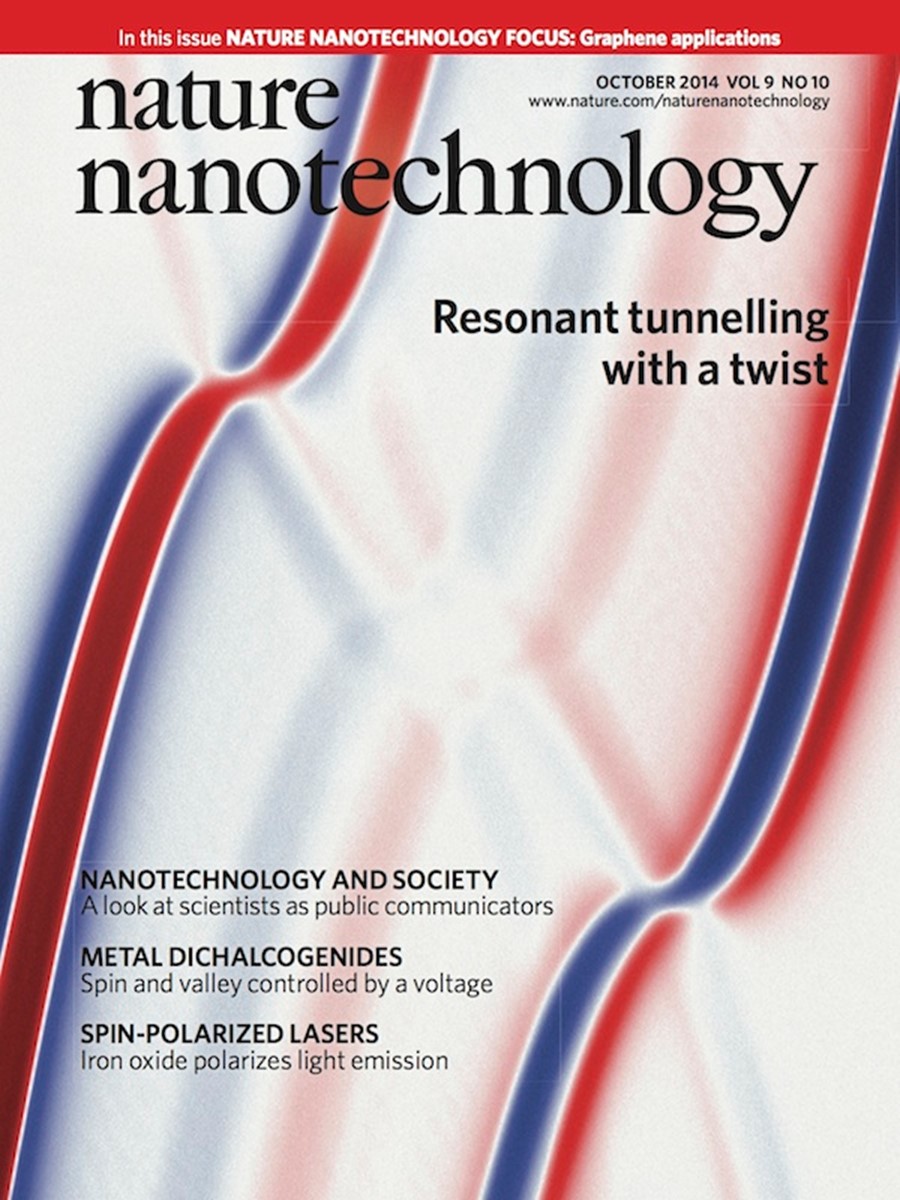Nature turns its attention to graphene
On the 10th anniversary of Andre Geim and Konstantin Novoselov’s Nobel Prize-winning work on graphene, a prestigious science journal devotes a special issue to the world’s most talked about nanomaterial.
Nature Nanotechnology, part of the internationally renowned and highly prestigious Nature group of science journals, is this month devoting its attention to graphene. This takes the form of a special issue of the journal, timed to celebrate the 10th anniversary of a landmark paper by Konstantin Novoselov, Andre Geim and others, in which the authors demonstrate the electrical properties of graphene flakes peeled off a block of graphite with sticky tape. Geim and Novoselov went on to win the 2010 Nobel Prize in Physics for their groundbreaking and characteristically creative science.
Europe, North America and Asia are all centres of graphene research and development, but Europe has special claim to be at the centre of these activities. Productive research groups exist across the continent, and many commercial companies are developing graphene into a material for real-world applications.
Academia and industry have come together in Europe to form the Graphene Flagship: the product of a European Commission communication which stressed the need for Europe to address the big scientific and technological challenges through long-term, multidisciplinary R&D efforts. The Graphene Flagship began life in October 2013, with 76 academic and industrial partners in 17 countries. Soon we will have 142 partners in 23 countries, and our coordinated activities are bearing fruit, not least in a wealth of peer-reviewed scientific literature, much of it published in journals such asNature and its offspring.
Andrea Ferrari, executive board chairman of the Graphene Flagship, and director of the Cambridge Graphene Centre, says, “Over the past year, the foundations of this 10 year programme have been consolidated, and we are quickly sailing towards our objectives. In one year, the flagship has produced hundreds of publications in major journals, several patent applications, many demonstrators and prototypes, and with tens of European companies joining our effort to take graphene and related materials from the lab to the factory floor.”
Professor Ferrari adds that the flagship’s efforts over the next 10 years will be critical in ensuring that the seminal scientific work begun in Europe sees the continent reaping the potential economic and social benefits of graphene and related two-dimensional nanomaterials.
Commenting on the commercial input to the Graphene Flagship, its director, Professor Jari Kinaret, a materials scientist based at Chalmers University of Technology in Gothenburg, says: “A third of the partners coming in through the first expansion phase are industrial, bringing the proportion of industrial partners in the flagship to 27%. This demonstrates that we are off to a good start.”
In its October 2014 issue, Nature Nanotechnology features articles from graphene researchers the world over, and included among the authors are a number associated with the Graphene Flagship.
Among the feature articles in the special issue of Nature Nanotechnology, we have one from Amaia Zurutuza and Claudio Marinelli of graphene production firms Graphenea and Applied Graphene Materials, who look at the challenges involved in graphene commercialisation. Felice Torrisi, of the Cambridge Graphene Centre, and Jonathan Coleman, at the AMBER centre of Trinity College Dublin, then discuss conductive inks incorporating graphene and other two-dimensional nanomaterials. There are also a number of scientific reviews, including one on graphene-based photodetectors by Frank Koppens from the Institute of Photonic Sciences in Barcelona, Thomas Mueller of the Vienna University of Technology, and others.
The graphene research and development community worldwide has achieved a huge amount over the past decade, and it is right that we celebrate. However, in the Graphene Flagship we are acutely aware that there is much work to do before graphene becomes an established industrial material, and society sees the tangible benefits of graphene and related nanomaterials.
This is epitomised in the words of Nobel laureate Konstantin Novoselov…
“I rarely look back – much more excited about the next 10 years.”
And on that note, we continue with the task in hand.

I rarely look back – much more excited about the next 10 years."
Nobel Laureate Professor



